Introduction to Your 14-Day China Adventure
Why China Should Be on Your Bucket List
China is not just a country; it’s a continent within itself. With over 5,000 years of continuous civilization, mind-bending landscapes, ancient wonders, futuristic cities, and diverse cultures, it’s one of the most fascinating travel destinations on Earth. You can walk on a 2,000-year-old wall in the morning, enjoy dumplings that follow century-old recipes for lunch, and cruise down a river flanked by fairy-tale mountains by sunset. It’s that vast and versatile.
For first-time visitors, a two-week itinerary is the sweet spot. It gives you enough time to see the iconic landmarks like the Great Wall and the Terracotta Warriors while also diving into China’s modern cities, delicious food scenes, and peaceful countryside. If you’ve ever wondered whether you could experience old and new, rural and urban, mountain and coast—all in one trip—China says yes, and it says it boldly.
What to Expect in Two Weeks Across China
Expect a whirlwind adventure that will stretch your mind, your feet, and maybe even your taste buds. Your 14 days in China will span world-famous sites, bullet trains that travel over 300 km/h, encounters with cuddly giant pandas, dramatic limestone peaks, peaceful lakes, tea fields, and modern cities with skylines that could rival any in the world.
We’ve curated this travel itinerary for efficiency, comfort, and immersion. You’ll start in Beijing and wrap up in Shanghai, hitting Xi’an, Chengdu, Guilin, Hangzhou, and more in between. It’s paced just right—not rushed, not slow. We’ll even help you figure out travel logistics, cultural dos and don’ts, and how to pack like a pro. So buckle up—your adventure begins now.
Pre-Trip Planning Essentials
Best Time to Visit China
Timing your trip right is key. China is huge, with varied climates. Spring (April–June) and autumn (September–October) are the best times to visit. During these months, temperatures are moderate, skies are usually clear, and tourist attractions aren’t overly crowded.
14 Days China Travel Itinerary Cost Calculator
Explore city-by-city cost for a 14-day trip across China’s most iconic destinations.
If you’re into flowers and nature, spring is breathtaking—think cherry blossoms in Hangzhou and fresh green hills in Guilin. Autumn, on the other hand, offers colorful foliage in Beijing and perfect hiking weather along the Great Wall.
Avoid the first week of October (National Day Holiday), Chinese New Year (January/February), and May 1st (Labor Day)—these are peak travel times in China and could mean packed trains, overbooked hotels, and inflated prices.
Visa Requirements and Travel Documents
Most travelers to China need a visa unless you’re eligible for a visa-free transit (like the 144-hour visa-free policy in select cities). Apply at least 4-6 weeks before your trip. You’ll need:
Don’t forget travel insurance—some embassies even require proof. Scan your documents and keep digital backups. A VPN is also highly recommended if you want to use Google, WhatsApp, or social media apps like Instagram or Facebook (more on that later).
- A valid passport (with 6+ months remaining)
- Completed visa application form
- A recent passport photo
- Flight itinerary and proof of hotel bookings
Travel Insurance and Health Preparations
A reliable travel insurance plan is non-negotiable. Choose one that covers medical emergencies, trip cancellations, theft, and any high-risk activities (like hiking or rafting). China’s healthcare system is good in big cities, but treatment can be expensive without insurance.
As for vaccinations, check with your doctor. Routine shots like tetanus, hepatitis A/B, and typhoid are generally recommended. Carry a basic medical kit with meds for digestion issues (trust us), motion sickness (for cruises and trains), and cold/flu relief.
And don’t forget: always carry toilet paper and hand sanitizer. Public restrooms in China aren’t always Western-style or stocked with essentials.
Essential Travel Tips for First-Time Visitors
Navigating the Language Barrier
Mandarin Chinese is the official language, and in most places—especially smaller cities or towns—English isn’t widely spoken. But don’t worry, we’ve got hacks:
- Download offline translation apps (Google Translate or Pleco)
- Use translation cards for dietary or allergy needs
- Point and gesture—body language is universal
Hotel staff in big cities usually speak some English. Still, learning a few phrases like “hello” (nǐ hǎo), “thank you” (xièxiè), and “how much?” (duō shǎo qián) goes a long way. Locals appreciate the effort.
Currency, Payments, and Budgeting Tips
The Chinese Yuan (RMB or CNY) is the local currency. Credit cards aren’t widely accepted outside big hotels or malls. Mobile payment apps like Alipay and WeChat Pay dominate—but they’re hard to use without a Chinese bank account.
What can you do? Carry cash for markets, taxis, and small vendors. Use currency exchange kiosks or ATMs at major airports. Some modern tourist hotspots now accept international credit cards—but don’t rely on it.
Daily budget varies by city, but on average:
- Budget traveler: $50–$70/day
- Mid-range: $100–$150/day
- Luxury: $200+/day
Local Customs and Etiquette
China’s cultural norms are different—and fascinating. Here are a few things to keep in mind:
- Don’t stick chopsticks upright in rice—it resembles funeral offerings.
- Tipping isn’t expected, but appreciated in private tours.
- Don’t touch people’s heads—it’s considered disrespectful.
- Always accept items with both hands.
Also, expect curiosity—especially in rural areas. Some locals may stare or ask for photos. It’s not rude; they’re just intrigued.
What to Pack for Your China Trip
Weather-Appropriate Clothing
Layers are your best friend. China’s weather can shift dramatically from north to south. In spring and fall, pack:
- Light jackets and sweaters
- Comfortable walking shoes
- Raincoat or compact umbrella
- A scarf for chilly evenings
If you’re visiting higher altitudes like Xi’an or Guilin, bring thermal wear or a fleece. Summer travelers should prepare for heat and humidity, while winter visitors need heavy coats and gloves, especially in Beijing.
Must-Have Travel Gear
Here’s your essential packing list:
- Universal power adapter (China uses types A, C, and I)
- VPN subscription
- Reusable water bottle with filter
- Compact backpack or day bag
- Power bank for your phone
- Copies of all important documents
Optional but helpful:
- Snacks (especially if you’re a picky eater)
- Travel toilet paper (many public restrooms don’t have any)
- Neck pillow and sleep mask for long train rides or flights
Apps and Tools for a Smooth Trip
Tech will be your best friend in China. Download these before you land:
- Maps: Baidu Maps or Google Maps (needs VPN)
- Translation: Google Translate, Pleco
- Transportation: DiDi (Chinese Uber), Trip.com for trains/flights
- Communication: WeChat (essential in China)
A good VPN like ExpressVPN or NordVPN is crucial to access Google, Instagram, Facebook, or WhatsApp. Set it up before you land.
14 Days China Travel Itinerary
Day 1-2: Arrival in Beijing – The Ancient Capital
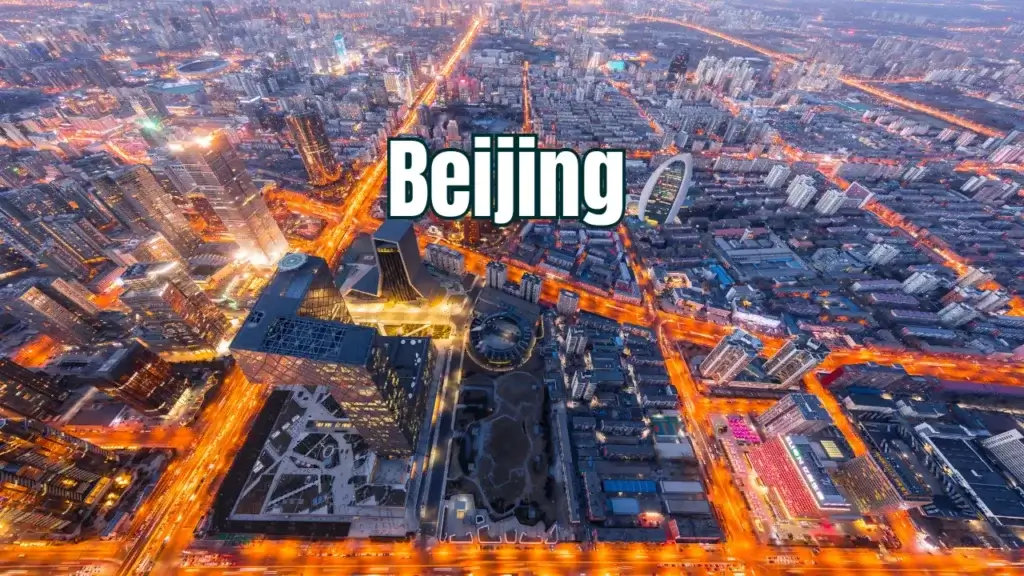
Airport Transfers and First Impressions
Landing in Beijing Capital International Airport (PEK) is like stepping into a vast hub that bridges imperial tradition and futuristic ambition. As China’s primary international gateway, it’s impressively efficient—yet sprawling. If you’re arriving jet-lagged, consider booking an airport transfer in advance or taking the Airport Express train into the city.
Beijing welcomes you with its broad avenues, smog-filtered sunlight, and an exciting mix of skyscrapers and historic courtyards (hutongs). Depending on arrival time, ease into your adventure with a stroll around your hotel’s neighborhood. Take note: the air might feel dry, and if you’re sensitive to pollution, a face mask is useful on certain days.
Public transport is affordable and accessible. Pick up a metro card (Yikatong) to travel easily throughout the city. Taxis are available, but most drivers don’t speak English—have your hotel name written in Chinese.
Explore Tiananmen Square and the Forbidden City
Start your journey with one of the most iconic historical sites in the world: Tiananmen Square. This is not just a public square; it’s a symbol of modern Chinese history. It’s massive—perfect for walking off jet lag. Snap photos near the Monument to the People’s Heroes and the Mausoleum of Mao Zedong.
Across the street is the Forbidden City, China’s imperial palace from the Ming to the Qing dynasty. Reserve tickets online ahead of time—it’s packed with tourists and regulations. The complex spans over 180 acres, so wear good walking shoes. Marvel at the Golden Throne, intricately painted gates, and halls that once held secrets of emperors and empresses. Don’t miss the Palace of Heavenly Purity and the imperial gardens at the rear.
By the time you’re done, you’ll have walked several miles—but your mind will be richer for it.
Evening at Wangfujing Street
When night falls, treat yourself to a vibrant sensory feast at Wangfujing Snack Street. This famous pedestrian market is touristy but worth it—an explosion of colors, smells, and sizzling sounds. Want to try something daring? Skewered scorpions await the brave. Prefer something milder? Opt for candied hawthorn skewers, jianbing (Chinese crepes), or grilled lamb.
If crowds overwhelm you, head to one of the local hotpot restaurants nearby and warm up over bubbling broth and fresh ingredients. Cap off your first day with a rooftop view of the skyline or a local Chinese beer.
Day 3-4: Beijing – Great Wall and More

Hike the Great Wall of China (Mutianyu Section)
No trip to China is complete without seeing the Great Wall. The Mutianyu section is highly recommended for first-timers—it’s scenic, less crowded than Badaling, and well-preserved. You can hike, take a cable car up, or even toboggan down. It’s about 1.5 hours from downtown Beijing by private car or group tour.
Expect awe-inspiring views. The wall snakes along lush, green mountains like a mythical dragon guarding the landscape. Set aside at least 4–5 hours, and go early to avoid crowds. Bring water, sunscreen, and wear sturdy shoes.
Feeling ambitious? Hike from Mutianyu to Jiankou—a rugged, wild stretch not for the faint-hearted.
Visit the Temple of Heaven and Summer Palace
Back in the city, explore Temple of Heaven, a masterpiece of Ming dynasty architecture where emperors prayed for good harvests. The park is also alive with locals doing tai chi, dancing, and playing traditional instruments—pure culture immersion.
Next, head to the Summer Palace, a lakeside imperial retreat with ornate bridges, pavilions, and the stunning Long Corridor. Rent a paddleboat on Kunming Lake or climb Longevity Hill for panoramic views. Allow a full afternoon to soak it all in.
Try Peking Duck and Local Cuisine
Dinner in Beijing calls for Peking Duck, the crispy, golden-skinned delicacy that dates back centuries. Quanjude and Da Dong are famous restaurants known for their traditional and modern twists on this dish. Watch the chefs slice the duck tableside, and wrap the pieces in thin pancakes with hoisin sauce and spring onions—perfection.
Not a duck fan? Try zhajiangmian (noodles with soybean paste), baozi (steamed buns), or Beijing-style hotpot.
End your day with a foot massage at a local spa—you’ve earned it.
Day 5-6: Xi’an – Terracotta Warriors and Old City Vibes
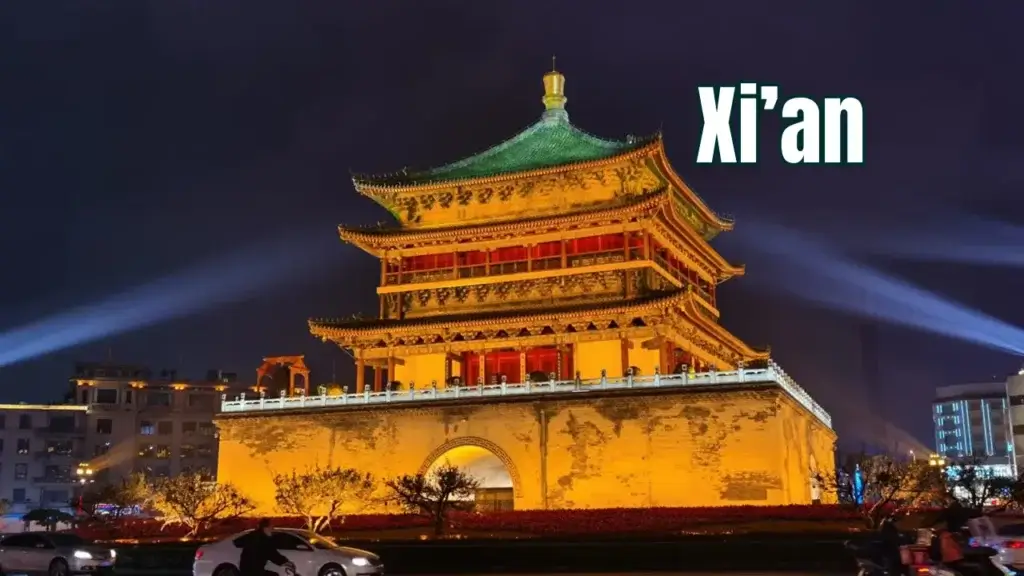
Bullet Train from Beijing to Xi’an
On Day 5, hop on a high-speed bullet train to Xi’an—one of the most ancient cities in China. The journey takes about 5–6 hours, but it’s sleek, comfortable, and punctual. The trains are marvels of engineering, often reaching 300 km/h. Sit back, sip some green tea, and enjoy the countryside flashing by.
Arriving in Xi’an feels like stepping into a time capsule. Once the eastern terminus of the Silk Road, this walled city is rich in historical relics and a melting pot of cultures.
Check into a hotel near the South Gate for easy access to the city wall, Muslim Quarter, and Bell Tower.
Marvel at the Terracotta Army
This is the stuff of legends. Located about 1 hour outside the city, the Terracotta Army consists of over 8,000 life-sized clay soldiers, horses, and chariots—all built to guard Emperor Qin Shi Huang in the afterlife. It’s mind-blowing in both scale and detail.
Each warrior has unique facial features, armor, and posture. The site is divided into three pits, with Pit 1 being the largest and most impressive. Hire a guide or join a tour for historical context—it’s worth it.
Bring snacks and water, as the food options nearby are mediocre. Also, prepare for crowds.
Explore the Ancient City Wall and Muslim Quarter
Back in the city, rent a bike or take a walk along Xi’an’s City Wall, one of the most complete and largest city walls in China. At sunset, it offers breathtaking views of the city blending ancient and modern elements.
In the evening, head to the Muslim Quarter, a bustling street food paradise with an energetic atmosphere. Try roujiamo (Chinese hamburger), lamb skewers, and hand-pulled noodles. The fusion of Chinese and Islamic culture is palpable, especially at the Great Mosque, a serene spot tucked away in the chaos.
You’ll leave Xi’an with a full belly and a deeper appreciation for China’s rich past.
Day 7-8: Chengdu – Pandas and Spicy Food

Fly to Chengdu and Visit Panda Research Base
Time to head south to Chengdu, capital of Sichuan Province and home of the adorable giant panda. A quick 1.5-hour flight from Xi’an brings you to this relaxed, tree-lined city known for spicy food and laid-back vibes.
First stop? Chengdu Research Base of Giant Panda Breeding. Go early—pandas are most active in the morning. Watch them munch bamboo, roll around, and nap like fluffy royalty. There’s also a red panda area and educational exhibits.
The center is clean, well-maintained, and extremely popular, so buy your tickets in advance.
Enjoy Sichuan Cuisine and Hotpot Culture
Chengdu is a UNESCO City of Gastronomy—and your taste buds are in for a wild ride. The city’s signature flavor is “mala”—a numbing spiciness from Sichuan peppercorns.
Start with Sichuan hotpot: choose your broth (spicy, mild, or half-and-half), pick your ingredients (beef slices, lotus root, tofu, mushrooms), and dip them in sesame oil-based sauces. It’s a full-on culinary experience.
Other must-tries include:
- Mapo tofu – silken tofu in a fiery chili sauce
- Kung Pao chicken – sweet, spicy, and crunchy
- Dan dan noodles – chewy, spicy, and addicting
Vegetarians, fear not—Chengdu’s cuisine offers plenty of plant-based options.
Stroll Through Jinli Ancient Street
Wind down with an evening stroll at Jinli Ancient Street, a reconstructed Ming/Qing-style alley near Wuhou Temple. It’s atmospheric, colorful, and lined with traditional tea houses, snack stalls, and artisan shops.
Grab a sugar painting lollipop, sip some jasmine tea, and soak in the lively buzz of Chengdu’s night culture. If you’re lucky, you might catch a Sichuan opera performance—complete with face-changing magic.
Day 9-10: Guilin and Yangshuo – Nature’s Beauty
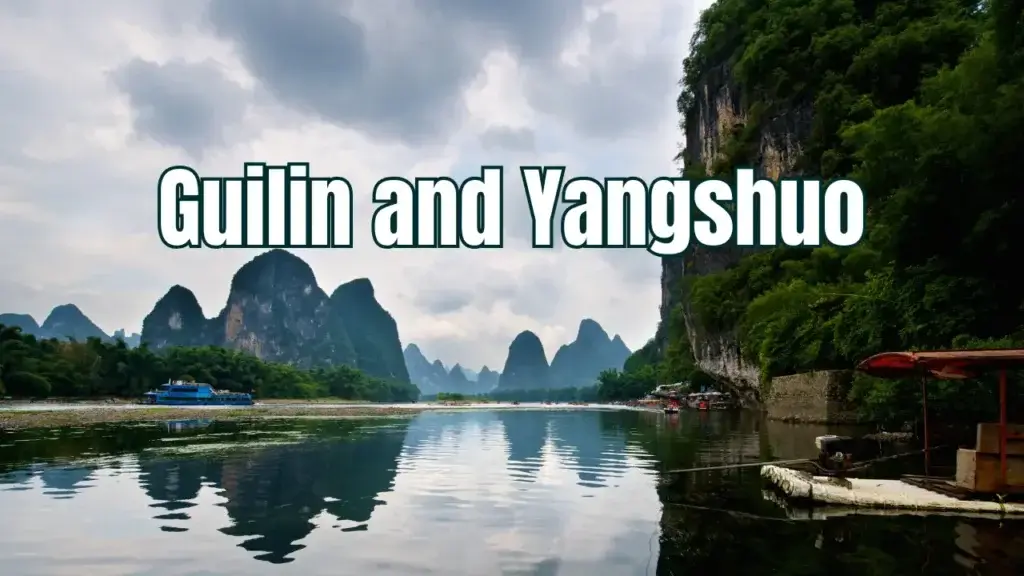
Cruise the Li River to Yangshuo
The next leg of your journey brings you deep into southern China, where nature steals the spotlight. Fly from Chengdu to Guilin, a city known for its karst mountain landscape and serene rivers. From Guilin, hop on a Li River cruise to Yangshuo, which is arguably one of the most scenic boat rides in the world.
The journey takes about 4–5 hours and glides through mist-shrouded peaks, bamboo forests, and sleepy riverside villages. You’ll recognize the iconic scenery from Chinese paintings and even the back of the 20 Yuan banknote. Don’t forget your camera—every bend in the river offers a postcard view.
Most cruises provide a simple lunch, but it’s wise to bring snacks. Choose a deluxe boat for a more comfortable experience. When you arrive in Yangshuo, you’ll immediately feel the laid-back, bohemian vibe of this backpacker-friendly town.
Bike Through Karst Mountains
Yangshuo is a paradise for outdoor lovers. Rent a bike or e-bike (very common and easy to find) and explore the countryside on two wheels. You’ll ride past rice paddies, small villages, and towering limestone cliffs that look like ancient stone giants standing guard over the land.
The Yulong River area is especially stunning. Make your way to scenic spots like the Moon Hill, where you can hike for panoramic views, or stop at a village café for a cold drink and chat with locals.
If biking’s not your thing, you can take a sidecar motorbike tour or even a guided electric scooter ride. The roads are mostly flat, and the scenery is jaw-dropping.
Bamboo Rafting and Local Experiences
For something truly peaceful, try bamboo rafting on the Yulong River. It’s slow, quiet, and incredibly relaxing. Your bamboo raft will be steered by a local guide using a long bamboo pole. Glide past water buffalo, farmers tending to fields, and fishermen with cormorant birds.
At night, head to West Street, a charming pedestrian lane packed with shops, restaurants, and bars. It’s touristy, but worth a stroll. Try some local Guilin rice noodles, or stop in for a drink at one of the rooftop cafes with views of the karst formations silhouetted by moonlight.
Yangshuo offers a breath of fresh air—literally and figuratively—and balances the urban hustle with tranquil charm.
Day 11-12: Hangzhou – Serenity and Scenery
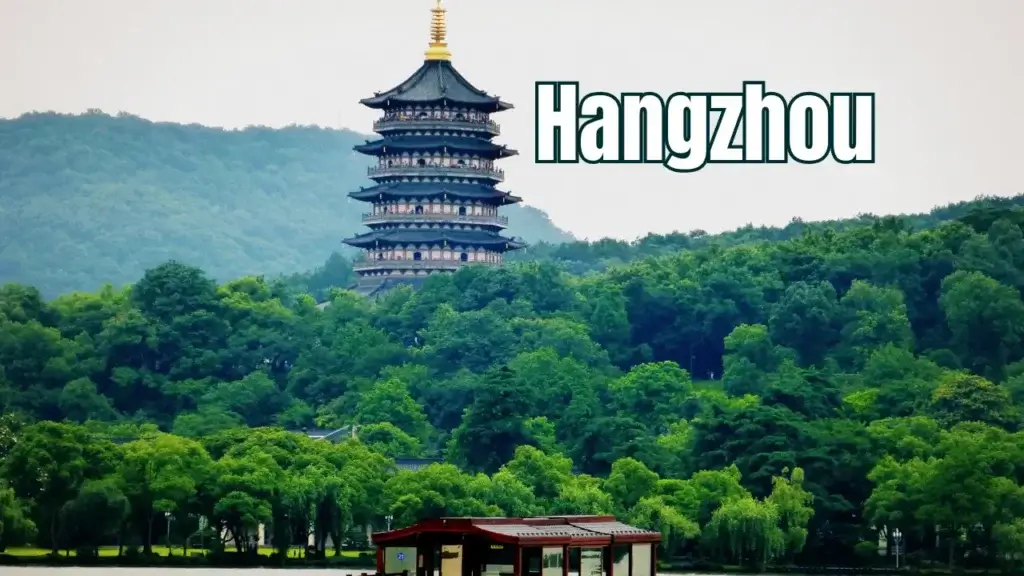
West Lake and Lingyin Temple
After recharging in Yangshuo, it’s time to experience the poetic elegance of Hangzhou. A short flight or high-speed train brings you to this lakeside city once praised by Marco Polo as “the finest and most splendid city in the world.”
Start at the centerpiece: West Lake. This UNESCO World Heritage site is famed for its tranquil beauty, arched bridges, willow-lined paths, and lotus-filled ponds. Rent a bike or take a traditional boat to enjoy the scenery. Highlights include the Broken Bridge, Three Pools Mirroring the Moon, and Leifeng Pagoda.
Nearby, visit the Lingyin Temple, one of China’s oldest and most revered Buddhist temples. The surrounding Feilai Feng grottoes feature intricate Buddhist carvings in the cliffs. The atmosphere is serene and spiritual—a welcome contrast to the country’s mega-cities.
Tea Plantations and Local Markets
Hangzhou is also famous for its Dragon Well (Longjing) Tea, considered one of China’s finest green teas. Visit a tea plantation in the Meijiawu or Longjing Village area, where you can walk among terraced tea fields and join a traditional tea ceremony. Learn how tea is picked, pan-fried, and brewed for maximum flavor.
Engage with local farmers, sip fresh brews with nutty undertones, and purchase authentic Longjing tea directly from the source—it makes a perfect souvenir.
Next, head to Hefang Street, a bustling market street offering everything from herbal remedies and calligraphy to street snacks and traditional crafts. Try some osmanthus cake or purchase local silk goods.
Sunset by the Lake
As the day winds down, return to West Lake for the evening. Sunset here is nothing short of magical. Take a slow walk along the Su Causeway or find a lakeside café to sit and watch the sun dip behind the misty hills, casting golden reflections on the water.
If you’re in the mood for culture, catch the famous Impression West Lake show—an outdoor spectacle of music, lights, and dance set on the lake itself. Directed by the same visionary behind the Beijing Olympics opening ceremony, it’s an unforgettable finale to your Hangzhou visit.
Day 13-14: Shanghai – The Modern Metropolis
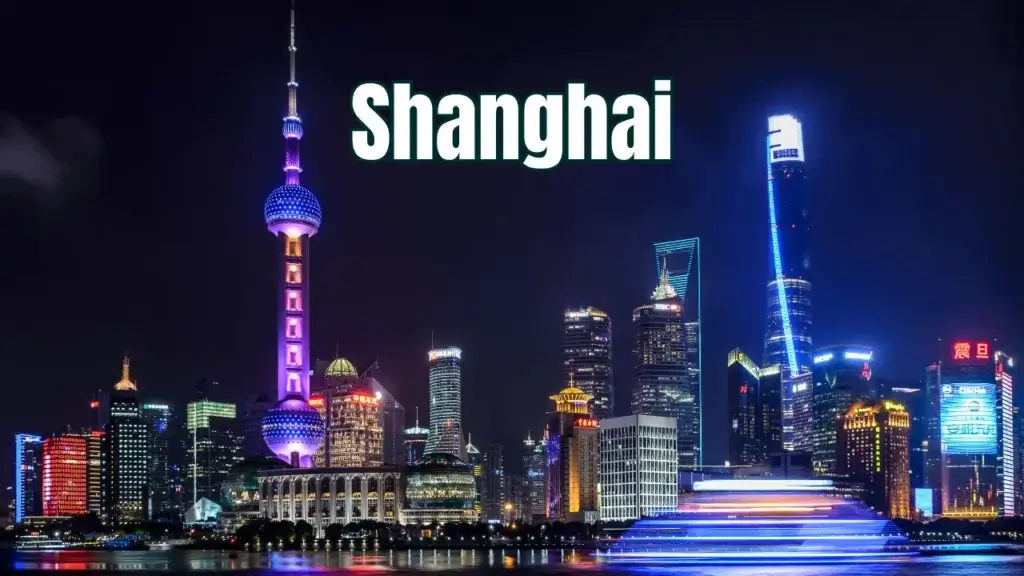
The Bund and Nanjing Road Shopping
Your final stop is Shanghai, China’s largest and most cosmopolitan city. A high-speed train from Hangzhou takes just over an hour, delivering you straight into the heart of this buzzing metropolis.
Begin with a walk along The Bund, a waterfront promenade that perfectly showcases Shanghai’s past and future. On one side, you have European-style colonial buildings; on the other, the sci-fi skyline of Pudong with its iconic towers—Shanghai Tower, Jin Mao Tower, and the Oriental Pearl TV Tower.
As night falls, the skyline lights up with dazzling neon—perfect for photos.
Next, head to Nanjing Road, one of the world’s busiest shopping streets. Whether you’re looking for luxury brands, quirky boutiques, or just a people-watching spot, Nanjing Road delivers. Don’t forget to snack on some Shanghai-style xiaolongbao (soup dumplings) while you’re there.
Shanghai Tower and Skyline Views
Dedicate time to visiting Shanghai Tower, China’s tallest skyscraper and the second tallest in the world. The observation deck offers jaw-dropping views across the city. You can also check out the nearby Jin Mao Tower, which has a stunning atrium and a rooftop bar for sky-high cocktails.
If you prefer a more historic vibe, explore Yu Garden, a beautifully preserved classical garden in the heart of the city. Nearby, the Old Town Bazaar is great for last-minute souvenirs and a taste of old Shanghai.
Don’t skip Tianzifang—a maze of alleyways filled with cafes, art studios, and hipster shops. It’s where tradition meets creativity.
Wrap-Up Dinner and Departure Tips
For your final dinner, choose a rooftop restaurant overlooking The Bund or indulge in a high-end dining experience at one of Shanghai’s Michelin-starred eateries. Toast to your 14-day adventure with a glass of baijiu or local wine.
Before leaving, make sure your bags are packed with:
- Souvenirs (tea, silk, panda toys)
- Photos (back them up online!)
- Memories that’ll last a lifetime
Head to Pudong or Hongqiao International Airport depending on your flight. Plan for at least 3 hours ahead of departure time—Shanghai traffic can be unpredictable.
Budget Breakdown for the 14-Day Trip
Average Daily Costs
Traveling in China can be surprisingly affordable, especially when compared to Western countries or other parts of East Asia like Japan or South Korea. Your daily expenses will depend heavily on your travel style—budget, mid-range, or luxury.
Here’s a rough breakdown of average daily costs per person:
| Expense Category | Budget Traveler | Mid-Range Traveler | Luxury Traveler |
|---|---|---|---|
| Accommodation | $20 – $50 | $60 – $120 | $150 – $300+ |
| Food & Dining | $10 – $20 | $25 – $50 | $70 – $150 |
| Transportation | $10 – $20 | $20 – $40 | $50 – $100 |
| Entrance Fees/Tours | $10 – $25 | $30 – $60 | $80+ |
| Shopping & Souvenirs | Optional | $10 – $30 | $50+ |
| Total/Day | $50 – $115 | $135 – $300 | $400+ |
You can mix and match—splurge on certain experiences (like luxury hotels in Shanghai or panda tours in Chengdu), while keeping meals and shopping on the budget side.
Total Estimated Budget
Let’s assume a mid-range traveler’s route for this itinerary:
- 13 nights of accommodation: $1,200
- Intercity transport (flights + trains): $400
- Local transport: $200
- Food: $500
- Entrance fees/tours: $300
- Miscellaneous/shopping: $200
Total for 14 days: ~$2,800 per person
This budget includes nearly everything except international airfare. If you book in advance, use discount websites, and avoid peak season, you can travel comfortably within this range.
Money-Saving Tips
- Book trains and flights early on sites like Trip.com or China Highlights for cheaper fares.
- Travel light—avoid baggage fees on domestic flights.
- Eat like a local—small restaurants and street food offer authentic, delicious meals for a fraction of tourist prices.
- Use WeChat or Alipay deals—some places offer QR-code discounts.
- Join group tours for attractions like the Great Wall or Terracotta Army instead of private guides.
Being smart with your planning means you can enjoy premium experiences without blowing your budget.
Safety, Connectivity, and Transportation Tips
Getting Around Cities
China’s public transportation is top-tier—clean, efficient, and cheap. The subway systems in major cities like Beijing, Shanghai, and Chengdu are English-friendly and easy to navigate.
- Subway: Fares range from $0.50–$1.00 USD. Avoid rush hour (7–9 AM and 5–7 PM).
- Buses: Inexpensive but harder to use if you don’t read Chinese.
- Taxis: Reliable, but drivers rarely speak English. Use DiDi (the Chinese Uber).
- Bikes: Shared bike apps like Meituan or HelloBike are everywhere in tourist areas.
For longer trips between cities, high-speed trains are a must. They’re fast, comfortable, and an experience in themselves. Book second-class for budget travel, or upgrade to first/business class for more space and quiet.
Staying Safe and Connected Online
China is generally a safe country for tourists. Petty crime like pickpocketing is rare, and violent crime is almost nonexistent in tourist zones. That said, always:
- Keep your valuables secure
- Use hotel safes for passports
- Avoid unlicensed taxis or unofficial tour guides
Internet access, however, is a different story. China’s Great Firewall blocks Google, YouTube, Facebook, Instagram, WhatsApp, and many other Western apps.
To stay connected:
- Get a VPN (Virtual Private Network) before arriving—NordVPN and ExpressVPN are popular.
- Purchase a local SIM card at the airport or use an eSIM.
- Use WeChat for messaging, payments, and social media—it’s a must-have in China.
Transportation Apps and Maps
A few apps will make your life way easier:
- WeChat – For communication, payments, maps, and even booking train tickets.
- DiDi – The Chinese version of Uber, with an English interface.
- Trip.com – For booking trains, flights, and hotels with English support.
- Baidu Maps – Works like Google Maps, but more accurate in China.
- Pleco – Best Chinese-English dictionary and translator app.
If you’re tech-savvy and proactive, navigating China is smooth—even without speaking the language.
Final Thoughts – Why Two Weeks in China is Life-Changing
Cultural Insights and Lessons Learned
In just 14 days, you’ll witness the grandeur of ancient dynasties and the pulse of modern innovation. You’ll eat flavors that redefine your palate, see sights that challenge your imagination, and meet people whose hospitality will leave a mark on your soul.
China is complex and rich, shaped by centuries of philosophy, conflict, art, and resilience. It’s a place where contrast defines the experience—old temples stand beside skyscrapers, monks pray next to electric car chargers, and calligraphy classes are held inside futuristic malls.
Most visitors leave China with more questions than answers—and that’s a good thing. It changes you. It opens your mind. It humbles you.
Must-Do Highlights Recap
Let’s recap the unforgettable experiences you’ll cover:
- Walk across the Great Wall at sunrise
- Gaze into the eyes of a Terracotta Warrior
- Watch pandas nap in bamboo groves
- Bike along karst mountains in Yangshuo
- Sip Dragon Well tea with locals
- Cruise West Lake at sunset
- Feel the buzz of Shanghai’s skyline
Every day offers a new chapter in this once-in-a-lifetime journey.
Planning Your Next Trip
Two weeks won’t be enough—trust me. As you board your flight home, you might already be dreaming of a return visit.
Next time, you might explore:
- The mystical landscapes of Tibet
- The grasslands of Inner Mongolia
- The Silk Road cities of Dunhuang and Turpan
- The tropical islands of Hainan
- The volcanic hot springs of Yunnan
China is vast and infinite—and this is just the beginning.
FAQs About Traveling in China
Do I need a local SIM card?
It’s highly recommended. It gives you internet access, helps with navigation, and allows you to use essential apps like WeChat and DiDi. Buy one at the airport or order an eSIM online.
Is it easy to travel without speaking Chinese?
Yes, especially in major cities and tourist areas. Use translation apps, learn basic phrases, and carry address cards in Chinese. Most signs have English translations.
What are the best souvenirs to bring home?
Top picks include Longjing tea, silk scarves, panda-themed gifts, traditional calligraphy sets, and regional snacks like chili oil or mooncakes.
Can I use Google and Instagram in China?
Not without a VPN. China blocks many Western apps. Set up a reliable VPN before arrival if you want to access them.
Is tipping expected in China?
Not generally. Tipping is not part of Chinese culture. However, in upscale hotels or private tours, tipping is appreciated but not mandatory.

